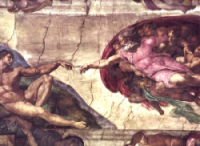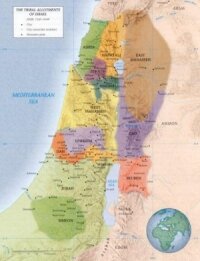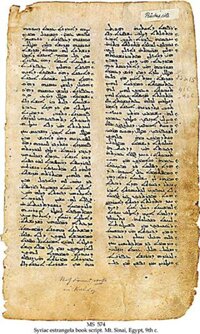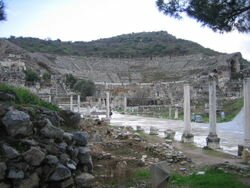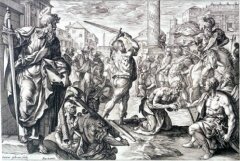 Levi/Levy (Hebrew: לֵוִי, "joining") was, according to the Book of Genesis, the third son of Jacob and Leah, and the founder of the Israelite Tribe of Levi (the Levites); however Biblical scholars view this as postdiction, an eponymous metaphor providing an Etiology of the connectedness of the tribe to others in the Israelite confederation. Certain religious and political functions were reserved for the Levites, and, according to textual scholars, the early sources of the Torah - the Jahwist and Elohist - appear to treat the term Levi as just being a word meaning priest; scholars suspect that "levi" was originally a general term for a priest, and had no connection to ancestry, and that it was only later, for example in the priestly source and Blessing of Moses, that the existence of a tribe named Levi became assumed, in order to explain the origin of the priestly caste.
Levi/Levy (Hebrew: לֵוִי, "joining") was, according to the Book of Genesis, the third son of Jacob and Leah, and the founder of the Israelite Tribe of Levi (the Levites); however Biblical scholars view this as postdiction, an eponymous metaphor providing an Etiology of the connectedness of the tribe to others in the Israelite confederation. Certain religious and political functions were reserved for the Levites, and, according to textual scholars, the early sources of the Torah - the Jahwist and Elohist - appear to treat the term Levi as just being a word meaning priest; scholars suspect that "levi" was originally a general term for a priest, and had no connection to ancestry, and that it was only later, for example in the priestly source and Blessing of Moses, that the existence of a tribe named Levi became assumed, in order to explain the origin of the priestly caste.The text of the Torah argues that the name of Levi refers to Leah's hope for Jacob to join with her, implying a derivation from yillaweh, meaning he will join, but Biblical scholars have proposed quite different origins of the name.
Many scholars suspect that it simply means priest, either by being a loan word originating from the Minaean word lawi'u, meaning priest, or by referring to those people who were joined to the Ark of the Covenant. Some scholars believe that the Levites were not originally Israelite, instead originating as migrants, and consequently consider the name to refer to the Levites joining with either the Israelites in general, or the earlier Israelite priesthood in particular. It has also been suggested that the term Levi may just be a corruption of the name Leah (or vice versa), or cognate with the word leviathan, whose exact translation remains highly debated.
More...



